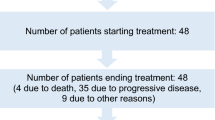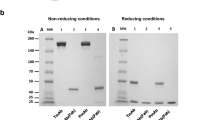Abstract
Triple-negative breast (TNBC) cancer that is upregulated with epidermal growth factor receptor (EGFR), and devoid of both the hormonal receptors and epidermal growth factor receptor 2 (HER 2), has led to a concept of treating TNBC with EGFR-targeted therapeutics. The combination of paclitaxel (PTX) and piperine (PIP) may improve the bioavailability of paclitaxel for cancer therapy. TPGS (vit E-PEG 1000-succinate)-coated liposomes were prepared with PTX alone or in combination with PIP, and either with (targeted) or without (non-targeted) cetuximab (CTX) conjugation. The Bradford assay indicated that 75% of CTX has been conjugated on the liposomes. The size and percent encapsulation of PTX&PIP co-loaded liposomes were found to be in the range of 204 to 218 nm and 31–73%, respectively. The drug release rate was found to be higher at pH 5.5 in comparison with release at pH 6.4 and pH 7.4. Cellular uptake and toxicity studies on MDA-MB-231 cells showed that PTX&PIP co-loaded targeted liposomes have demonstrated superior uptake and cytotoxicity than their non-targeted counterparts. The IC50 values of both of the liposomal formulations were found to be significantly higher than PTX control. Indeed, combining PIP with PTX control has improved the cytotoxicity of PTX control, which proved the synergistic anticancer effect of PIP. Lyophilized liposomes showed an excellent stability profile with the size range between 189 and 210 nm. Plasma stability study revealed a slight increase in the particle size due to the adsorption of plasma proteins on the surface of liposomes. The long-term stability study also indicated that liposomes were stable at 4°C.






Similar content being viewed by others
Change history
27 July 2020
As the authors were working on similar projects on liposomes at the same time, the 3D figures of Fig. 3 bi and Fig. 3 bii were inadvertently misplaced.
References
Cancer genome atlas network. Comprehensive molecular portraits of human breast tumours. Nature. 2012;490(7418):61-71. https://doi.org/10.1038/nature11412.Epub.
Hessel H, Poignee-Heger M, Lohmann S, et al. Subtyping of triple negative breast carcinoma on the basis of RTK expression. J Cancer. 2018;9(15):2589-602. https://doi.org/10.7150/jca.23023.
Jam S, Abdollahi A, Zand S, et al. Androgen receptor expression in triple-negative breast cancer. Arch Breast Cancer. 2019;31:90-4. https://doi.org/10.32768/abc.20196292-95.
Vojtek M, Marques MP, Ferreira IM, Mota-Filipe H, Diniz C. Anticancer activity of palladium-based complexes against triple-negative breast cancer. Drug Discov Today. 2019;24:1044-58. https://doi.org/10.1016/j.drudis.2019.02.012.
Kutty RV, Feng SS. Cetuximab conjugated vitamin E TPGS micelles for targeted delivery of docetaxel for treatment of triple negative breast cancers. Biomaterials. 2013;34(38):10160-71. https://doi.org/10.1016/j.biomaterials.2013.09.043.
Mehata AK, Bharti S, Singh P, et al. Trastuzumab decorated TPGS-g-chitosan nanoparticles for targeted breast cancer therapy. Colloids Surf B Biointerfaces. 2019;173:366-77. https://doi.org/10.1016/j.colsurfb.2018.10.007.
Raju A, Muthu MS, Feng SS. Trastuzumab-conjugated vitamin E TPGS liposomes for sustained and targeted delivery of docetaxel. Expert Opin Drug Deliv. 2013;10(6):747-60. https://doi.org/10.1517/17425247.2013.777425.
Anders C, Carey LA. Understanding and treating triple-negative breast cancer. Oncology. 2008;22(11):1233 https://www.ncbi.nlm.nih.gov/pmc/articles/PMC2868264.
Anders CK, Carey LA. Biology, metastatic patterns, and treatment of patients with triple-negative breast cancer. Clin Breast Cancer. 2009;9:S73-81. https://doi.org/10.3816/CBC.2009.s.008.
Schneider BP, Winer EP, Foulkes WD, Garber J, Perou CM, Richardson A, et al. Triple-negative breast cancer: risk factors to potential targets. Clin Cancer Res. 2008;14(24):8010-8. https://doi.org/10.1158/1078-0432.CCR-08-1208.
Jiang YZ, Ma D, Suo C, Shi J, Xue M, Hu X, et al. Genomic and transcriptomic landscape of triple-negative breast cancers: subtypes and treatment strategies. Cancer Cell. 2019;35(3):428-40. https://doi.org/10.1016/j.ccell.2019.02.001.
Ueno NT, Zhang D. Targeting EGFR in triple negative breast cancer. J Cancer. 2011;2:324-8. https://doi.org/10.7150/jca.2.324.
Dent R, Hanna WM, Trudeau M, Rawlinson E, Sun P, Narod SA. Pattern of metastatic spread in triple-negative breast cancer. Breast Cancer Res Treat. 2009;115(2):423-8. https://doi.org/10.1007/s10549-008-0086-2.
Nofech-Mozes S, Trudeau M, Kahn HK, Dent R, Rawlinson E, Sun P, et al. Patterns of recurrence in the basal and non-basal subtypes of triple-negative breast cancers. Breast Cancer Res Treat. 2009;118(1):131-7. https://doi.org/10.1007/s10549-008-0295-8.
Wahba HA, El-Hadaad HA. Current approaches in treatment of triple-negative breast cancer. Cancer Biol Med. 2015;12(2):106-16. https://doi.org/10.7497/j.issn.2095-3941.
Hu XC, Zhang J, Xu BH, Cai L, Ragaz J, Wang ZH, et al. Cisplatin plus gemcitabine versus paclitaxel plus gemcitabine as first-line therapy for metastatic triple-negative breast cancer (CBCSG006): a randomised, open-label, multicentre, phase 3 trial. Lancet Oncol. 2015;16(4):436-46. https://doi.org/10.1016/S1470-2045(15)70064-1.
Greenshields AL, Doucette CD, Sutton KM, Madera L, Annan H, Yaffe PB, et al. Piperine inhibits the growth and motility of triple-negative breast cancer cells. Cancer Lett. 2015;357(1):129-40. https://doi.org/10.1016/j.canlet.2014.11.017.
Smith ML, Murphy K, Doucette CD, Greenshields AL, Hoskin DW. The dietary flavonoid fisetin causes cell cycle arrest, caspase-dependent apoptosis, and enhanced cytotoxicity of chemotherapeutic drugs in triple-negative breast cancer cells. J Cell Biochem. 2016;117(8):1913-25. https://doi.org/10.1002/jcb.25490.
Alexander A, Qureshi A, Kumari L, et al. Role of herbal bioactives as a potential bioavailability enhancer for active pharmaceutical ingredients. Fitoterapia. 2014;97:1-14. https://doi.org/10.1016/j.fitote.2014.05.005.
Nabekura T, Yamaki T, Ueno K, Kitagawa S. Inhibition of P-glycoprotein and multidrug resistance protein 1 by dietary phytochemicals. Cancer Chemother Pharmacol. 2008;62(5):867-73. https://doi.org/10.1007/s00280-007-0676-4.
Atal CK, Dubey RK, Singh J. Biochemical basis of enhanced drug bioavailability by piperine: evidence that piperine is a potent inhibitor of drug metabolism. J Pharmacol Exp Ther. 1985;232(1):258-62.
Bhardwaj RK, Glaeser H, Becquemont L, Klotz U, Gupta SK, Fromm MF. Fromm, Piperine, a major constituent of black pepper, inhibits human P-glycoprotein and CYP3A4. J Pharmacol Exp Ther. 2002;302(2):645-50. https://doi.org/10.1124/jpet.102.034728.
Sriwiriyajan S, Tedasen A, Lailerd N, Boonyaphiphat P, Nitiruangjarat A, Deng Y, et al. Anticancer and cancer prevention effects of piperine-free Piper nigrum extract on N-nitrosomethylurea-induced mammary tumorigenesis in rats. Cancer Prev Res (Phila). 2016;9(1):74-82. https://doi.org/10.1158/1940-6207.CAPR-15-0127.
Corkery B, Crown J, Clynes M, O'Donovan N. Epidermal growth factor receptor as a potential therapeutic target in triple-negative breast cancer. Ann Oncol. 2009;20(5):862-7. https://doi.org/10.1093/annonc/mdn710.
Jung KH, Lee JH, Park JW, et al. Targeted therapy of triple negative MDA-MB-468 breast cancer with curcumin delivered by epidermal growth factor-conjugated phospholipid nanoparticles. Oncol Lett. 2018;15(6):9093-100. https://doi.org/10.3892/ol.2018.8471.
Tomao F, Papa A, Zaccarelli E, et al. Triple-negative breast cancer: new perspectives for targeted therapies. Onco Targets Ther. 2015;8:177-93. https://doi.org/10.2147/OTT.S67673.
Agrawal P, Singh RP, Kumari L, et al. TPGS-chitosan cross-linked targeted nanoparticles for effective brain cancer therapy. Mater Sci Eng C Mater Biol Appl. 2017;74:167-76. https://doi.org/10.1016/j.msec.2017.02.008.
Sonali, Singh RP, Singh N, et al. Transferrin liposomes of docetaxel for brain-targeted cancer applications: formulation and brain theranostics. Drug Deliv. 2016;23(4):261-1271. https://doi.org/10.3109/10717544.2016.1162878.
Singh S, Muthu MS. Preparation and characterization of nanoparticles containing an atypical antipsychotic agent. Nanomedicine (Lond). 2007;2(2):233-40. https://doi.org/10.2217/17435889.2.2.233.
Muthu MS, Avinash Kulkarni S, Liu Y, Feng SS. Development of docetaxel-loaded vitamin E TPGS micelles: formulation optimization, effects on brain cancer cells and biodistribution in rats. Nanomedicine. 2012;7(3):353-64. https://doi.org/10.2217/nnm.11.111.
Muthu MS, Kulkarni SA, Raju A, Feng SS. Theranostic liposomes of TPGS coating for targeted co-delivery of docetaxel and quantum dots. Biomaterials. 2012;33(12):3494-501. https://doi.org/10.1016/j.biomaterials.2012.01.036.
He Y, Luo L, Liang S, Long M, Xu H. Influence of probe-sonication process on drug entrapment efficiency of liposomes loaded with a hydrophobic drug. Int J Polym Mater Polym. 2019;68(4):193-7. https://doi.org/10.1080/00914037.2018.1434651.
Wang L. Preparation and in vitro evaluation of an acidic environment-responsive liposome for paclitaxel tumor targeting. Asian J Pharm Sci. 2017;12(5):470-7. https://doi.org/10.1016/j.ajps.2017.05.008.
Soe ZC, Thapa RK, Ou W, Gautam M, Nguyen HT, Jin SG, et al. Folate receptor-mediated celastrol and irinotecan combination delivery using liposomes for effective chemotherapy. Colloids Surf B Biointerfaces. 2018;170:718-28. https://doi.org/10.1016/j.colsurfb.2018.07.013.
Ramadass SK, Anantharaman NV, Subramanian S, Sivasubramanian S, Madhan B. Paclitaxel/Epigallocatechin gallate coloaded liposome: a synergistic delivery to control the invasiveness of MDA-MB-231 breast cancer cells. Colloids Surf B Biointerfaces. 2015;125:65-72. https://doi.org/10.1016/j.colsurfb.2014.11.005.
Ye J, Xia X, Dong W, Hao H, Meng L, Yang Y, et al. Cellular uptake mechanism and comparative evaluation of antineoplastic effects of paclitaxel-cholesterol lipid emulsion on triple-negative and non-triple-negative breast cancer cell lines. Int J Nanomedicine. 2016;11:4125-40. https://doi.org/10.2147/IJN.S113638.
Jain S, Kumar D, Swarnakar NK, Thanki K. Polyelectrolyte stabilized multilayered liposomes for oral delivery of paclitaxel. Biomaterials. 2012;33(28):6758-68. https://doi.org/10.1016/j.biomaterials.2012.05.026.
Banerjee P, Geng T, Mahanty A, Li T, Zong L, Wang B Wang, Integrating the drug, disulfiram into the vitamin E-TPGS-modified PEGylated nanostructured lipid carriers to synergize its repurposing for anti-cancer therapy of solid tumors, Int J Pharm 2019;557:374-389. https://doi.org/10.1016/j.ijpharm.2018.12.051.
Sickmier EA, Kurzeja RJ, Michelsen K, et al. The panitumumab EGFR complex reveals a binding mechanism that overcomes cetuximab induced resistance. PLoS One. 2016;11(9):e0163366. https://doi.org/10.1371/journal.pone.0163366.
Seong JS, Yun ME, Park SN. Surfactant-stable and pH-sensitive liposomes coated with N-succinyl-chitosan and chitooligosaccharide for delivery of quercetin. Carbohydr Polym. 2018;1(181):659-667. https://doi.org/10.1016/j.carbpol.2017.11.098.
Acknowledgments
The authors acknowledge the Indian Institute of Technology- Banaras Hindu University (IIT-BHU), Varanasi, India, for MHRD research scholarship.
Author information
Authors and Affiliations
Corresponding author
Ethics declarations
Conflict of Interest
The authors declare that they have no conflict of interest.
Additional information
Publisher’s Note
Springer Nature remains neutral with regard to jurisdictional claims in published maps and institutional affiliations.
Rights and permissions
About this article
Cite this article
Burande, A.S., Viswanadh, M.K., Jha, A. et al. EGFR Targeted Paclitaxel and Piperine Co-loaded Liposomes for the Treatment of Triple Negative Breast Cancer. AAPS PharmSciTech 21, 151 (2020). https://doi.org/10.1208/s12249-020-01671-7
Received:
Accepted:
Published:
DOI: https://doi.org/10.1208/s12249-020-01671-7




